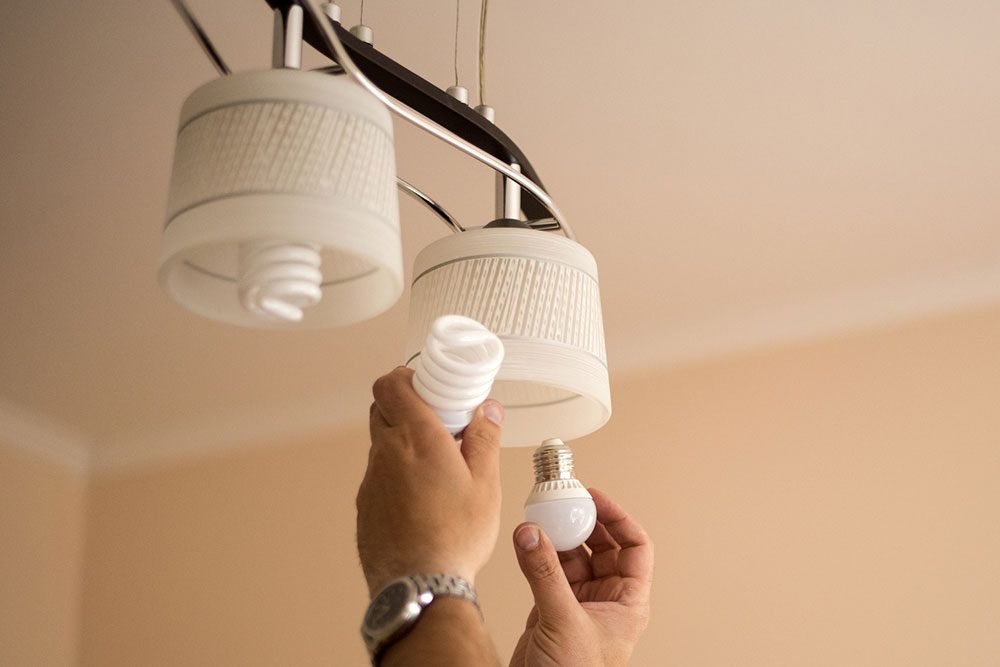9 key things to consider while choosing LED light fixtures

LED lights have become the preferred choice of lighting in households across the country, overtaking incandescent bulbs. They are known for their power, eco-friendliness, and longevity, making them a popular and cost-effective option. LED fixtures are designed to be mounted on walls or ceilings and work seamlessly with LED lights. When purchasing LED light fixtures, it is important to consider various factors for optimal performance. Some of the factors to consider include:
The heat resilience of fixtures
A common point of confusion among buyers is the inability to choose between standalone LED lights and fixtures. When one decides to purchase fixtures, one needs to be mindful of the heat resilience of the fixture. Basically, this point is about how heated a fixture gets when used for long periods of time. Overheating is bad for any electrical device or its holder. Therefore, one must purchase fixtures that can be used for several hours without the risk of overheating. On the cover of any product, manufacturers tend to highlight its top features and capabilities. So, if high heat resilience is one of the main selling points of a fixture, then purchasing it is a wise decision.
Bulb and fixture longevity
As stated earlier, LED lights are incredibly long-lasting. So, the combination of the bulb and fixture must also be similarly durable. When purchasing bulbs and fixtures, one must buy the products with the highest possible longevity.
Unlike other bulbs, LEDs do not burn out. These bulbs progressively reduce brightness before becoming extremely dim and unfit for use after a long time. These bulbs can even be placed in fixtures and installed in places that are hard to reach in the house. Their longevity means that owners would not need to replace them for years. Similarly, one must purchase fixtures that will last long and not get easily damaged or overheated. Sturdy fixtures made out of metal, wood, or plastic last many years and, therefore can be chosen.
Enclosure of fixtures
LED bulbs produce significantly less heat than incandescent bulbs. While incandescent bulbs use only 10% of their energy to produce light and radiate 90% as heat, LED bulbs use only 5% of their energy to radiate heat and the remaining 95% to produce light.
However, LED lights and bulbs have one weakness: their heat sensitivity. Heat tends to debilitate LED lamps and seriously affect their overall performance. Therefore, people are generally advised not to keep any flaming or boiling objects near an LED lamp. This heat sensitivity is also why these lamps should not be placed in fully enclosed fixtures. The general advice to homeowners or workplace owners looking to install LED light fixtures is to keep the light in open fixtures, not enclosed ones, for better heat dissipation. If one still uses an enclosed fixture, one needs to purchase LED bulbs explicitly designed to be used in such places.
LEDs and dimmer switches
While purchasing LED lamps and fixtures, one needs to phase out the dimmer switches that traditional bulbs use. These switches are generally not compatible with LED lamps. Most LED lamps are dimmable but not compatible with traditional light dimmer switches. Therefore, one must choose fixtures and dimmers that will perfectly be able to dim or brighten LED lamps whenever possible. This aspect is helpful to make the most of the adaptable brightness and intensity of an LED bulb.
Costing
Highly-priced products do not automatically translate into high quality. Expensive fixtures may come with fancy features and great design, but those will be useless if one does not use them often. Essentially, one needs LED light fixtures that hold the LED comfortably, make it easy to replace lamps when they run out of power and do not overheat. Based on that requirement, one can set a budget and purchase the fixtures that suit their requirements. Price is a key consideration factor for all products, and LED lamps or fixtures are no different.
Size of the installation space
Different spaces in one’s home, workplace, factory, or other zones may require different levels of illumination and general ambiance. Large and open spaces tend to benefit from cool white LED light fixtures that offer uniform and adequate lighting. Small and cozy spaces look best in warm white LED light fixtures that offer intimate lighting and ambiance.
When choosing a lighting fixture for a property, it’s important to consider the type of space that needs to be illuminated. A key factor to keep in mind is whether the fixture can evenly light up the space or not.
LED beam angle
The beam angle is a critical and often overlooked aspect when buyers purchase LED lights and fixtures. Similar to the previous point, the beam angle determines how uniformly one needs the room lit. The LED beam angle on the fixtures usually decides which part of the room it is installed is lit up the most brightly. It is crucial to buy LED light fixtures that can illuminate the part of the room that requires the most light (for work, reading, or other tasks) while also providing adequate lighting to the other areas in the room.
Warranty
One must purchase LED light fixtures that come with a good warranty period and additional elements. Although LED lamps generally perform well and do not require many repairs and replacements, having a long warranty period on any product provides owners with much-needed peace of mind. A reasonable warranty period ensures that the seller will address any issues and repair the LED light fixture if it underperforms due to some internal technical issue.
Additional features
Some of the features one can expect in their LED light fixture are dimming capability, color temperature adaptability, and heat capacity, among others.


